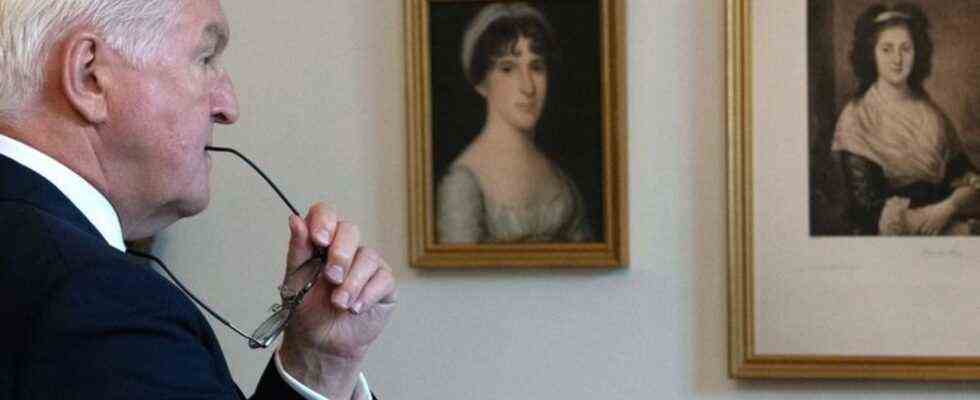Federal President
Art for democracy at Bellevue Palace
Federal President Franz Walter Steinmeier has accentuated the art exhibition in Bellevue Palace. Photo: Paul Zinken / dpa-Zentralbild / dpa
© dpa-infocom GmbH
Which works of art and artists honor Germany’s democratic and liberal roots? Federal President Franz-Walter Steinmeier sets new priorities in Bellevue Palace.
With some artistically redesigned rooms, Federal President Frank-Walter Steinmeier wants to emphasize the democratic role of his Berlin official seat Schloss Bellevue.
“In order to emphasize the expressiveness of Bellevue Palace as a place of representation of democracy, we have made some new accents that remind of the roots and ramifications of the German Enlightenment, freedom and democracy history,” said Steinmeier at the presentation on Friday in Berlin.
Two salons in the basement of the building in the Tiergarten as well as one salon each on the upper floor and in the south wing have been redesigned. A hall named after the publisher, democrat and freedom fighter Robert Blum (1807-1848) has been remembering democratic roots in the 19th century with paintings and drawings since November. The entrance gallery continues to give a glimpse of the present – in contrast to the other rooms – with constantly renewed modern art.
A room previously known as a ladies’ salon now stands for the tradition of Berlin debating salons and is named after Rahel Varnhagen (1771-1833), whose work is reminiscent of two paintings and a sculpture. “The contribution made by Jewish scholarship and, in particular, the self-confident, even emancipated contribution of Jewish women, should also be permanently at home in Bellevue Palace in the future,” said Steinmeier.
The former garden salon is now dedicated to Voltaire (1694-1778) with busts and paintings. With him and similar German thinkers, Steinmeier recalls “one of the most influential pioneers of the Enlightenment, opponent of feudalism and absolutism, biting critics of all kinds of superstitions – we would say today: conspiracy theories – critics of submissiveness, arbitrariness and domination”.
In the south wing, a stone collection, portraits and writings commemorate the work of the brothers Alexander (1769-1859) and Wilhelm von Humboldt (1767-1835). A room is also dedicated to Karl Friedrich Schinkel (1781-1841), according to Steinmeier the “greatest and most important architect that Prussia produced and who at the same time played a key role in shaping the Prussian metropolis of Berlin”. The former music room is now adorned with a bust of Schinkel’s designs for well-known buildings such as the concert hall on Gendarmenmarkt, which was built as a theater, the Friedrichswerder Church and the Neue Wache.
For Steinmeier, with the redesign, “the time of the construction of Bellevue Palace in 1785 was not left that far”. The new accentuation broadened the picture to include what had been thought and done in Germany in an enlightening, free-spirited and progressive way. “This enlargement – this is what we are concerned with – shows at the same time the roots of the Europe-bound, liberal and democratic Germany.”

